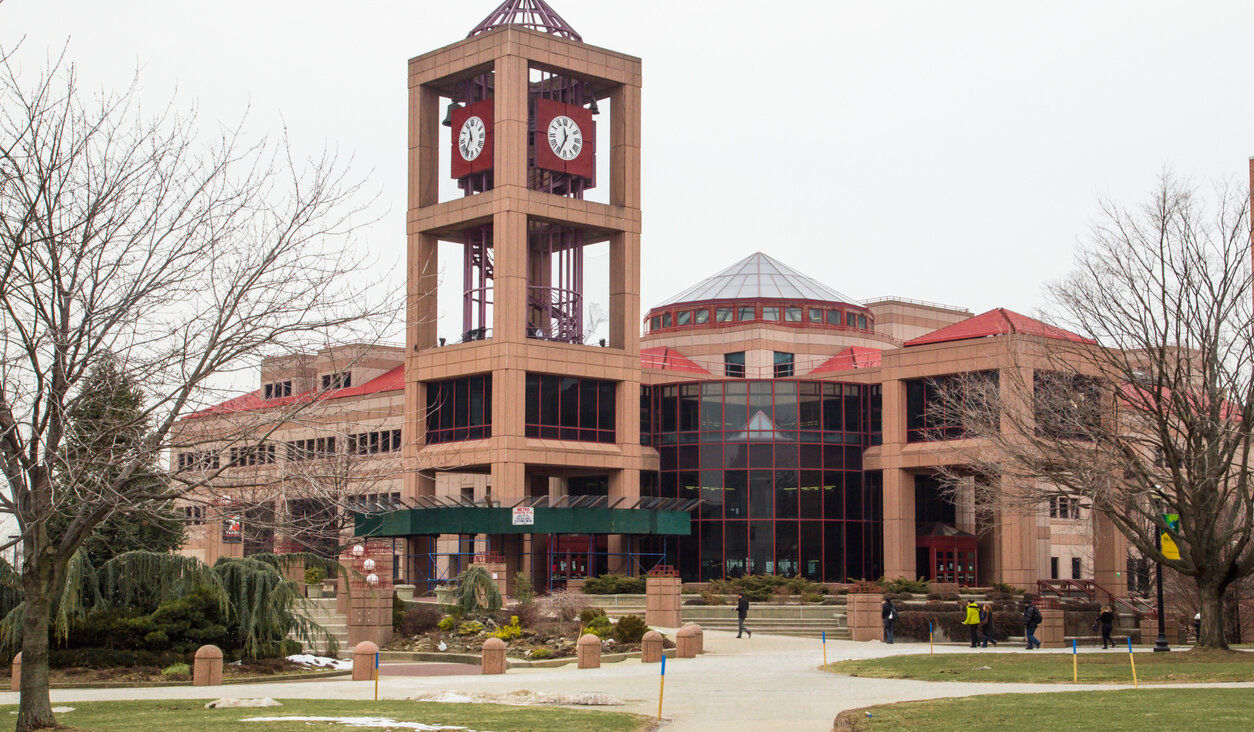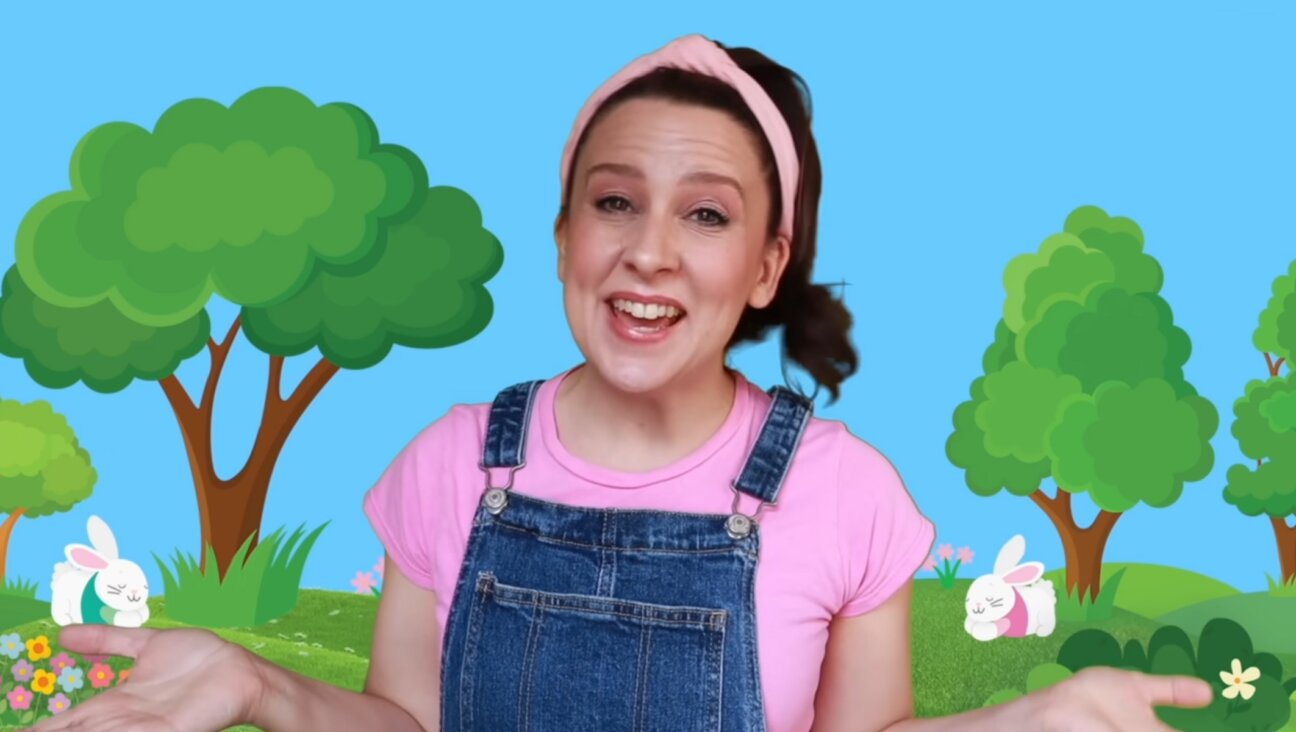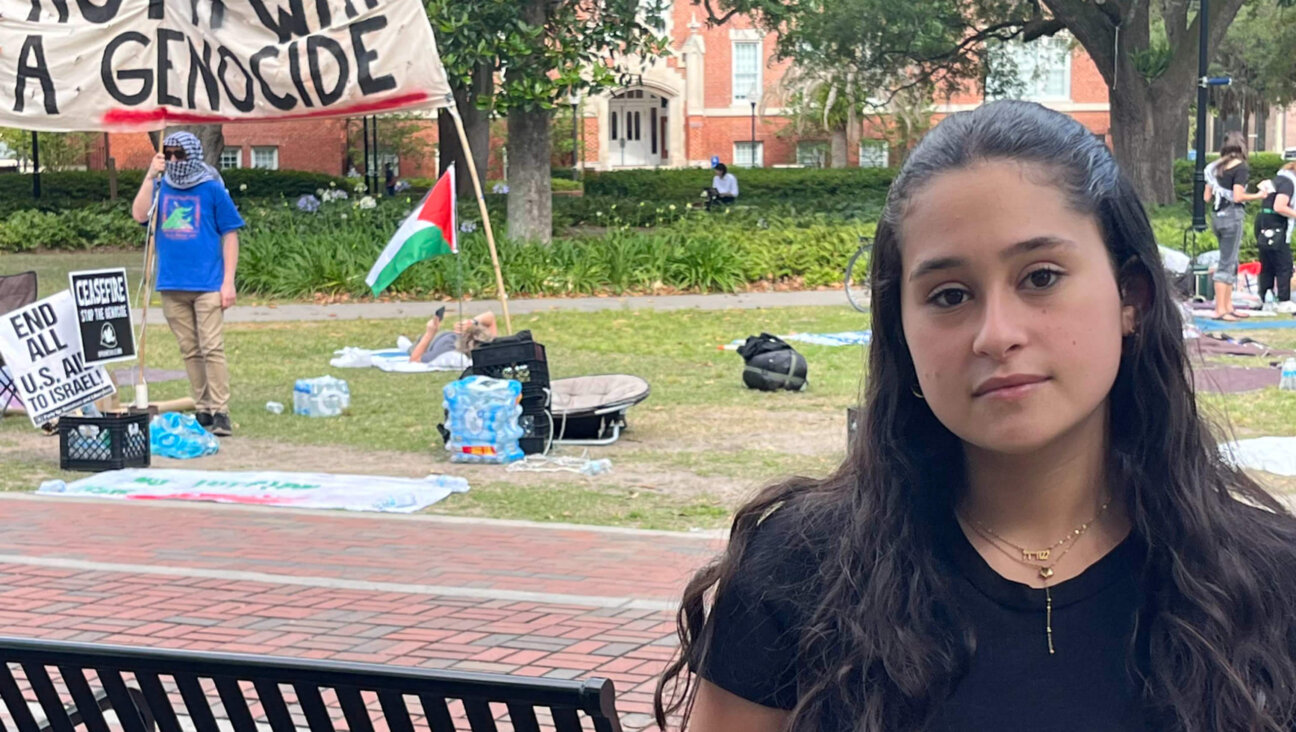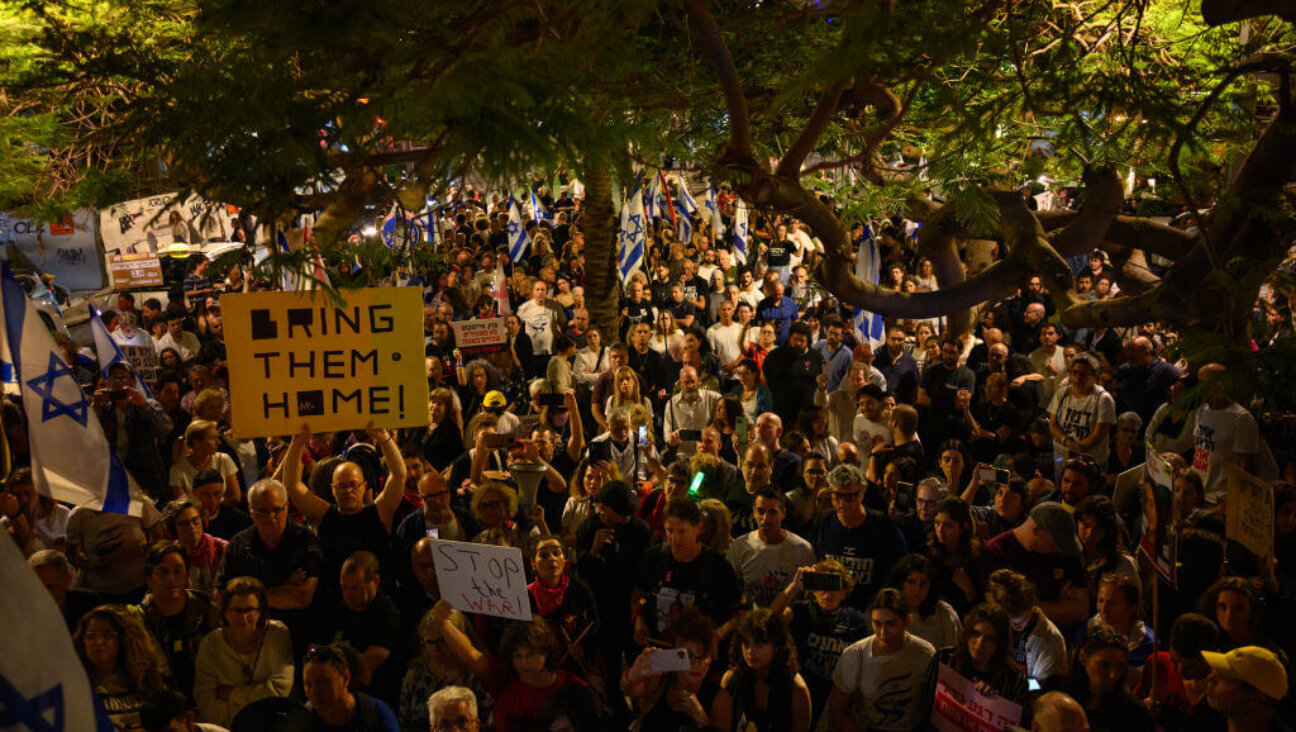The federal government is now funding Holocaust education, but does it actually work?

Graphic by Angelie Zaslavsky
With the passage and signing of the Never Again Education Act, the federal government is funding Holocaust education for the first time.
As asserted in the very name of the law, the politicians and Jewish organizations who supported the bill and hailed its recent signing by President Trump say education can actually help prevent violent hatred.
“The best way to prevent an atrocity like the Holocaust from occurring again is through education,” stated Sen. Jacky Rosen of Nevada, a former synagogue president who, along with Rep. Carolyn Maloney of New York, sponsored the legislation.
Holocaust education has become increasingly widespread since 1985, when California became the first state to mandate it. After a wave of new state laws in the past few years, it’s now a mandatory feature of public schools in more than a dozen states, including each of the six largest by population.
The new law, signed May 29 and passed by overwhelming bipartisan majorities in both chambers of Congress, does not include a Holocaust education requirement like those states do. Instead, it provides $10 million over five years to the United States Holocaust Memorial Museum in Washington, D.C. to develop and disseminate curriculum materials for middle and high school teachers who are already teaching it, or want to.
Those states that do require Holocaust education usually offer two reasons why: It’s an important event in world history, and learning about one of humanity’s darkest moments will help students recognize signs of prejudice and inspire them to speak out against it.
Yet after more than thirty years, experts and practitioners disagree over whether students who take Holocaust classes become any more ethical than students who don’t — or even if they retain the information after the class is over.
Many signs aren’t promising: Pew found in January that less than half of Americans know that 6 million Jews were killed; in 2018, two-thirds of Millennials told a pollster commissioned by a Holocaust survivor advocacy group that they didn’t know what Auschwitz was.
The data that would make the case for Holocaust education just isn’t there, said Jonathan Krasner, a professor of Jewish education research at Brandeis University.
“Nobody has done any kind of comprehensive study about the effectiveness of Holocaust education writ large,” he said.
Fighting “Holocaust fatigue”
Two of the largest not-for-profits that provide Holocaust education materials and training to teachers also supported the Never Again Education Act: Echoes & Reflections – a partnership of the Anti-Defamation League, the USC Shoah Foundation and Israel’s Yad Vashem museum – and the Massachusetts-based Facing History and Ourselves.
Both Echoes & Reflections and Facing History and Ourselves have sections of their website replete with studies that show that participants see improved empathy and civic-mindedness, but Krasner – who stressed that he admired both organizations – said that those were less convincing than those commissioned by outside groups or researchers.
“They’re not necessarily going to share things that don’t reflect well on them,” he said.
Effective research, in which independent scholars measure what students think before and after taking lessons, “is pricey, it’s time and labor intensive, and it ought to be both quantitative and qualitative,” said Simone Schweber, a professor of education and Jewish studies at the University of Wisconsin-Madison. “There aren’t a lot of those studies generally.”
Many studies that do exist paint a grim picture. Holocaust education has been part of Britain’s national curriculum since 1991, but a 2015 study found that most teens’ knowledge of the Holocaust came from pop culture and not from schools.
“I didn’t stop being racist because of learning about the Holocaust … I’ve always not been racist,” said one student interviewed.
One paper from the University of Arkansas did find that middle schoolers who went to a Holocaust education conference were more likely to self-report after the event that they would be “upstanders” in the face of injustice. But the change was significant only among minorities, not whites.
What’s more, educators do know, despite the patchy research, that students’ experiences with Holocaust education can vary widely.
What sometimes happens, said Schweber, who has written two books on the subject, is “Holocaust fatigue” – students zoning out because they have watched the same documentaries in multiple classes, or re-learned similar lessons every year from kindergarten through their senior year of high school. Other times, teachers assign books like Elie Wiesel’s “Night,” an account of his time in a concentration camp, before students are mature enough to internalize its messages.
The quality of the teaching can be “radically different” even from classroom to classroom within the same school, let alone different states, she said.
But the Holocaust education organizations say that those inconsistencies provide even more reason to support the education grants created by the law.
“Just because there’s a mandate that requires something to be taught, it doesn’t mean teachers are doing it in a productive way,” said Echoes & Reflections director Ariel Behrman.
“We know that when you teach high-quality science, students become better scientists. If you teach science that’s not up to snuff, students don’t,” agreed Facing History CEO Roger Brooks. “It’s the same with history.”
Connecting the Holocaust to today
Mistakes like “Holocaust fatigue” are what the educational organizations are there to prevent. Facing History and Ourselves says it’s worked with 100,000 teachers since since the mid-1970s, while Echoes & Reflections says it’s trained 70,000 teachers in the past 15 years.
The big national studies that show widespread ignorance of the Holocaust are likewise reasons to do more, not less, Behrman said. Even though Holocaust education is becoming more common, it’s still the case that most Americans didn’t grow up in a time or place when it was mandatory. Polls will be better in coming years, she said.
Other scholars interviewed said that Americans are bad at history in general, and that isn’t a verdict on Holocaust education specifically.
One way Facing History and Ourselves and Echoes & Reflections try to make the lessons stick is by emphasizing how the Holocaust is relevant to students’ lives, said Behrman. “We make connections to contemporary anti-Semitism, to the refugee experience in the Holocaust and the refugee experiences today.”
But those connections can create more complications.
Last year, for example, Rep. Alexandria Ocasio-Cortez – a product of public schools in New York, where Holocaust education has been mandatory since she was five years old – compared refugee detention centers on the Mexican border with Nazi concentration camps.
For this, she was condemned by the ADL and Yad Vashem.
Both of those organizations sponsor Echoes & Reflections, which encourages students to make connections to contemporary refugee issues, said its leader, Behrman.
The seeming contradictions reflect a larger debate among Jewish leaders over whether Holocaust classes should emphasize the dangers of prejudice in general, or highlight anti-Semitism and the particularly Jewish nature of the tragedy.
It’s inevitable that teachers at schools with small or non-existent Jewish populations will encourage students to focus on the universal lessons, to make it applicable to their lives, Krasner argued.
But that means that as more students who took Holocaust classes grow up and enter positions of leadership, they may be more willing to make Holocaust analogies that Jewish leaders may not like.
Whether this means Holocaust education has been successful or not will depend on who is answering the question, and when.
But even skeptics say that as long as Holocaust education is required by states, teachers should be given easy access to the best materials available.
“Here we are 75 years after the end of the war: We’re living in the period where the last living eyewitnesses won’t be around much longer, and Holocaust denial is resurgent because conspiracy theories can go viral on the internet and go unchecked,” said Avinoam Patt, a Jewish studies professor at the University of Connecticut and a former resident scholar at the United States Holocaust Memorial Museum. “That’s all the more reason to have these programs.”
Aiden Pink is the deputy news editor of the Forward. Contact him at [email protected] or follow him on Twitter @aidenpink
























